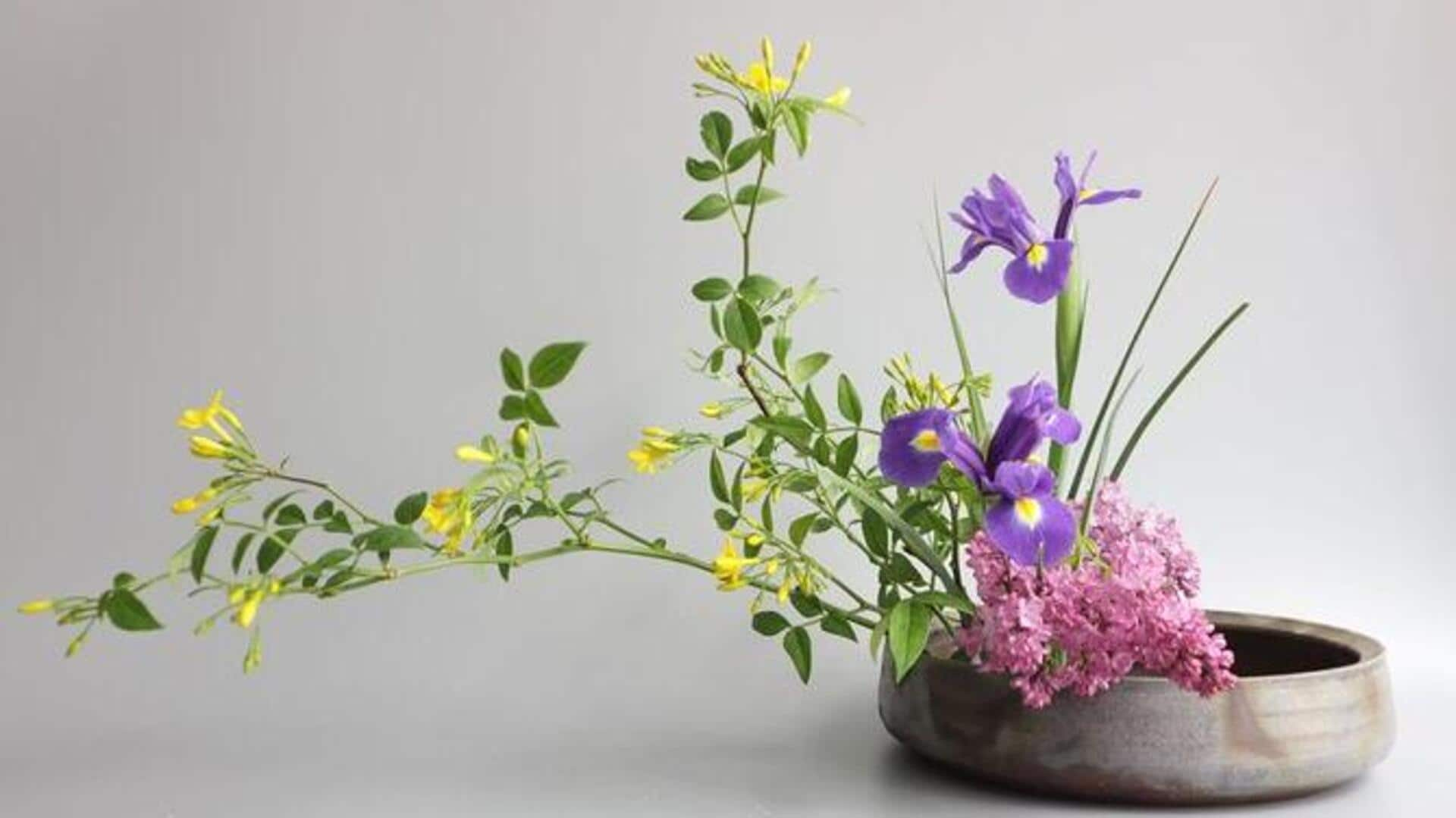
5 aspects of Japanese Ikebana floral art
What's the story
Ikebana, the ancient Japanese art of flower arrangement, is much more than an ornamental practice. It focuses on harmony, balance and simplicity. While Western flower arrangements concentrate on volume and colors, Ikebana underscores line and form. Over the centuries, this ancient art has developed into an alluring form and continues to enthrall people with its distinctive take on arranging flowers. Here are five fascinating things about Ikebana that make it an interesting study.
Minimalist approach
Emphasis on minimalism
Ikebana is famous for its minimalist approach. The art revolves around using fewer elements to make a striking impact. Every component in an arrangement is carefully selected for its shape, line, and color to convey a specific feeling or message. This minimalism encourages practitioners to appreciate the beauty in simplicity and find elegance in restraint.
Natural balance
Harmony between nature and humanity
A key principle of Ikebana is to achieve harmony between nature and humanity, symbolizing the deep connection between humans and their environment through the artful arrangement of flowers, branches, and leaves. These arrangements often mirror natural landscapes or the changing seasons. They aim to create a delicate balance between the natural elements used and the space they inhabit. This practice underscores the importance of coexistence and mutual respect in our relationship with nature.
Spatial awareness
Use of negative space
Negative space also plays an essential role in Ikebana arrangements. Unlike traditional Western floral designs that fill every available space with blooms, Ikebana uses empty spaces as part of the composition. This technique allows each element within the arrangement to stand out more prominently, while creating a sense of tranquility.
Symbolism in design
Symbolic meanings behind elements
In Ikebana, each and every element you choose for an arrangement is filled with symbolic meaning. Flowers could represent changing seasons or a whole spectrum of emotions, while colors are chosen to express different moods/messages. This added layer of symbolism enriches each Ikebana piece, giving artists a way to express complex ideas and feelings through their floral designs without relying on words.
Mindful creation
Meditative practice aspect
Practicing Ikebana can be meditative since it's all about mindfulness when it comes to creation processes such as selecting materials or arranging them mindfully into harmonious compositions. These require concentration but offer relaxation at the same time, making it a therapeutic activity that many people around the world enjoy today.